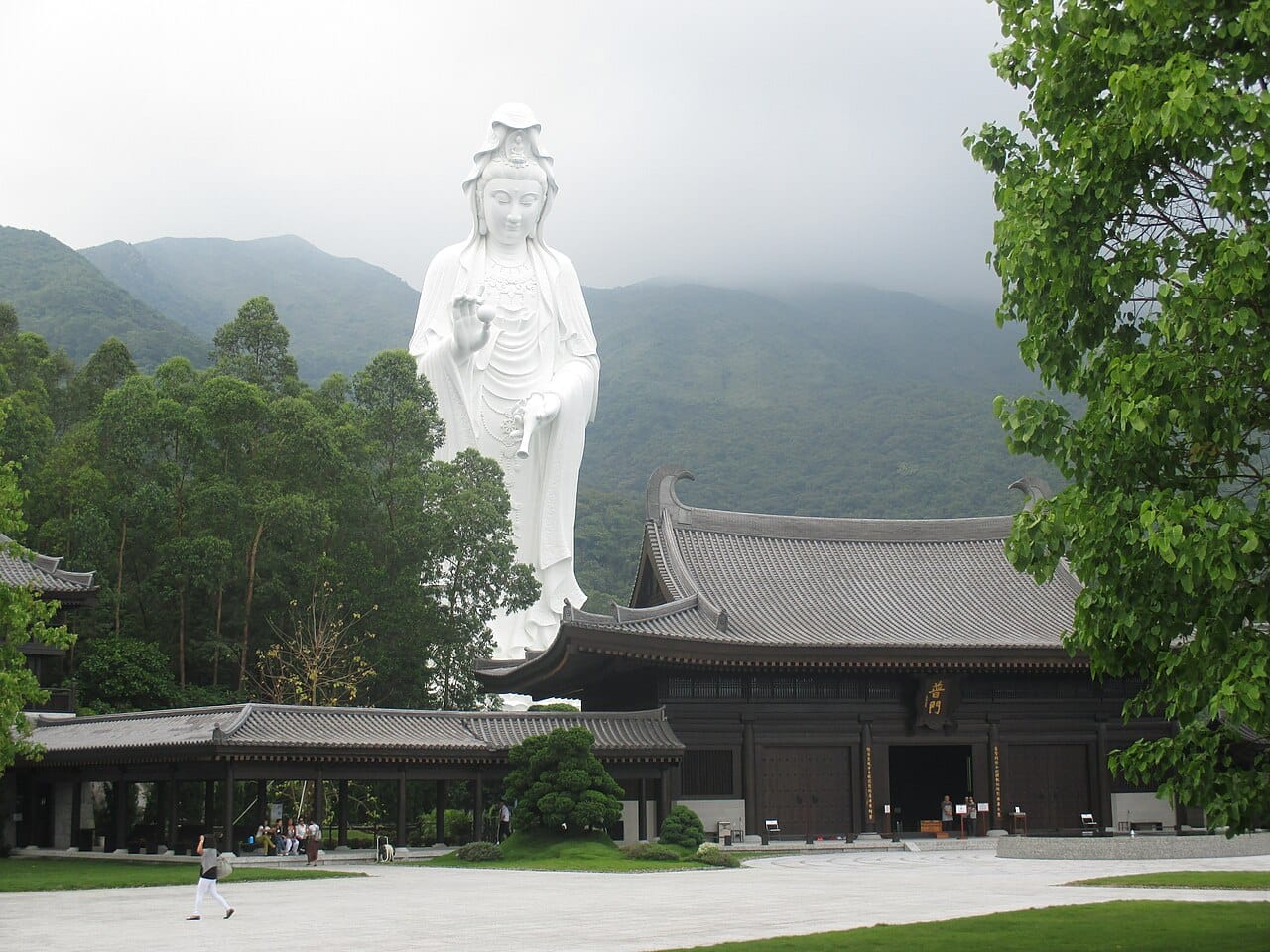Guanyin and the Virgin Mary
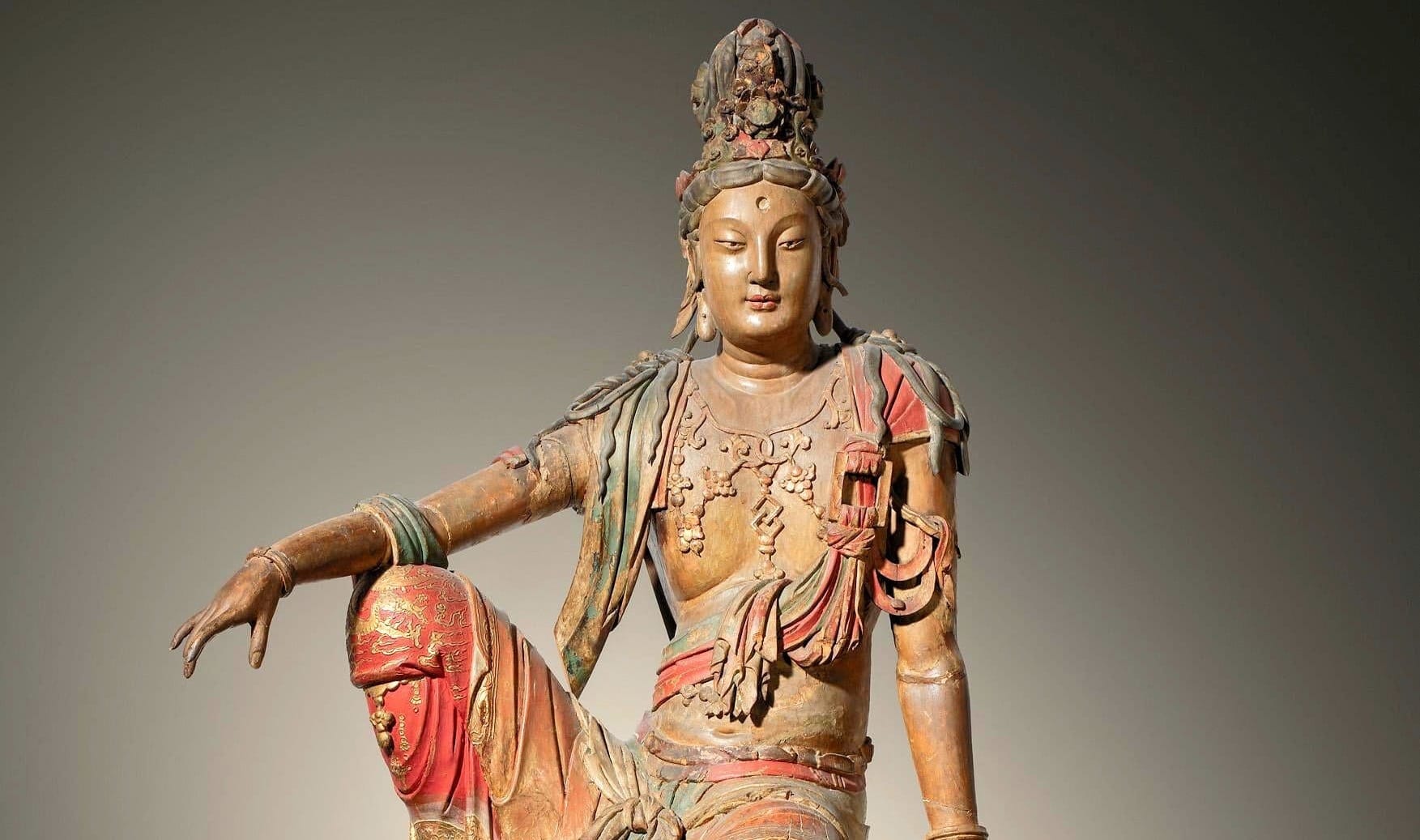
Guanyin holds a particular fascination in the West as an Asian Virgin Mary. Like Mary, she is a goddess of mercy and compassion (and also fertility and vegetarianism among other things).
Originally, in India, Guanyin was a “male” bodhisattva (named Avalokiteśvara), who became a Buddha, then stepped down to stay on Earth to be more accessible. In China, "he" evolved over time into a “female” goddess (named Guanyin or Kannon). In Asian Buddhism generally, it hasn't always been clear if Guanyin was a Buddha or a bodhisattva, but Guanyin has always been extremely popular. In recent times, “they” have become a queer icon throughout East Asia: technically, a bodhisattva (an "enlightened one") transcends gender.
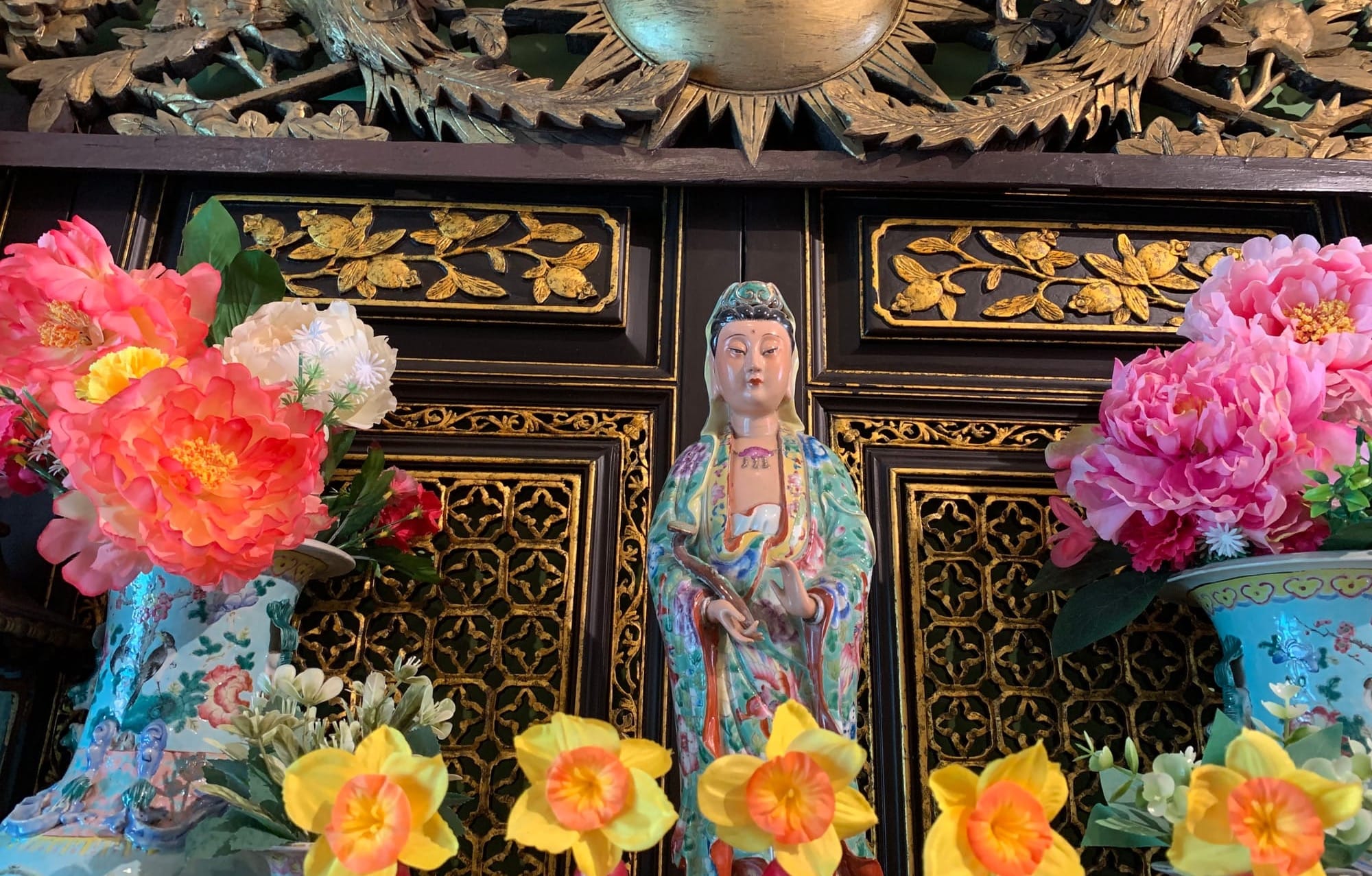
The goddess’ influence is everywhere: the photo above shows Guanyin in a Peranakan (Chinese Malay) shrine in Singapore, and Guanyin has inspired famous temples such as Shaolin Monastery and Putuoshan in China, and Sensō-ji and Kiyomizu-dera in Japan, Kek Lok Si in Penang, plus many others across East Asia, as well as legends, miracles, plays and festivals. They often have a halo or ring of fire behind them and they can be politically aligned, like this CCP statue on China's Hainan Island.
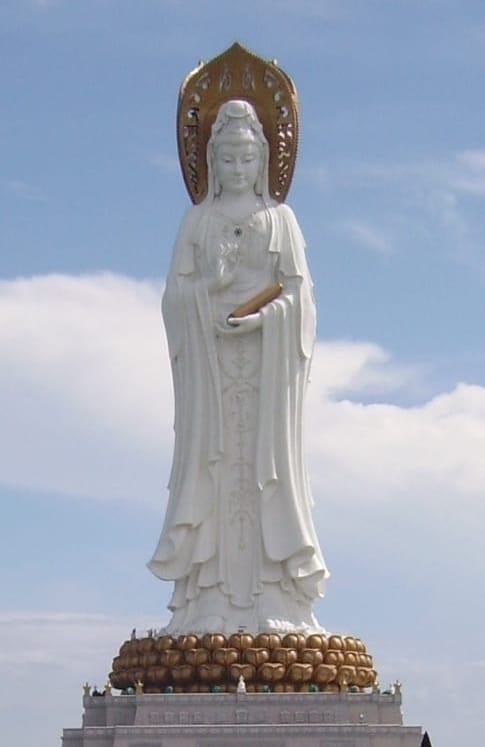
Guanyin (and Avalokiteśvara) are most valued for their nonjudgmental nature and the idea that nothing is permanent, two things I like. They hear the sounds of our suffering and they offer a path to liberation and salvation. Here I only want to note their resemblance to the Virgin Mary; indeed, Guanyin is sometimes shown holding a small child in Chinese art and sculpture. Did imperial China incorporate images of the Christian Madonna and child into their evolving images of Guanyin, or did they evolve contemporaneously?
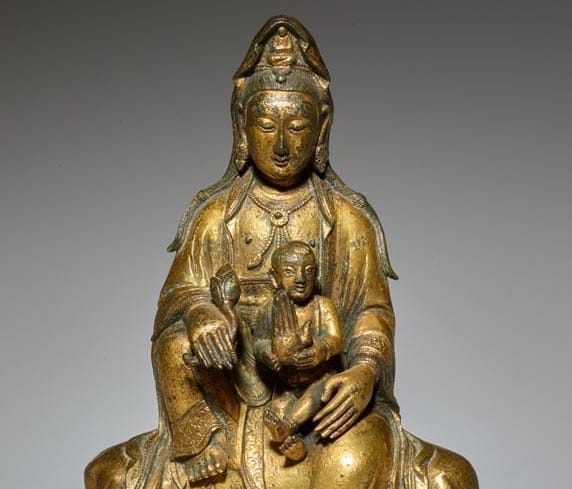
Whatever the answer is, it did open up a way for Jesuit missionaries in Asia to present Mary in terms the locals would have understood. Various of Guanyin’s incarnations remind me of the early Christian women saints who were persecuted (link), especially the story of Miaoshan, and like the Virgin Mary, Guanyin is worshipped as the patron saint of sailors and fishermen (link).
Unlike the Virgin Mary, however, Guanyin is often seen in temples and shrines with two others – the so-called Three Noble Ones of the Western Pure Land, which is a Buddhist Heaven (or death and rebirth if you will) and which is identified with the pilgrimage to Buddhism’s home in India. (c.f. The Wonderful Wizard of Oz).
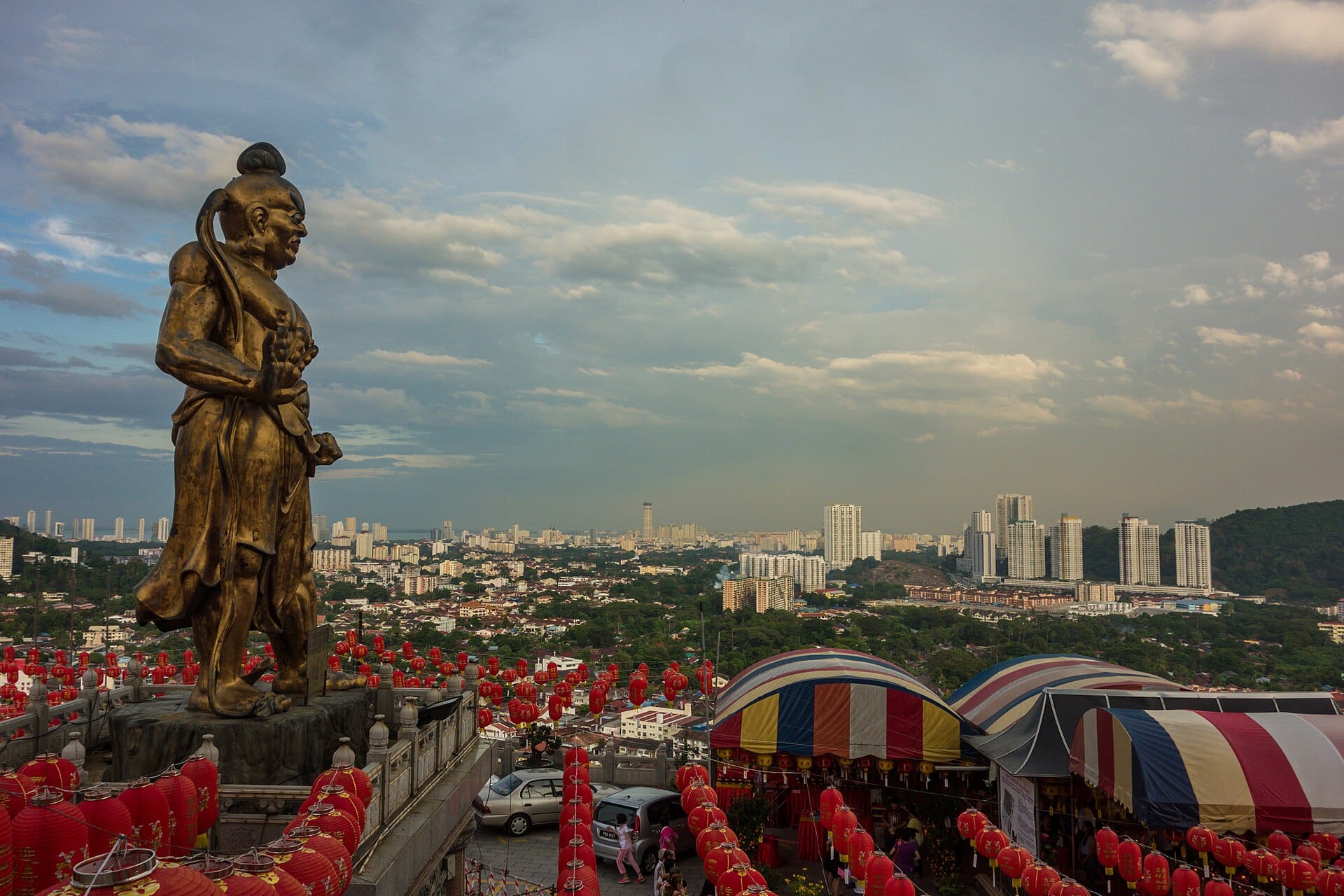
These benevolent figures of Guanyin contrast with the Buddha's temple guardians like the giant one above, from Kek Lok Si in Penang.
Finally, Tsz Shan Monastery in Hong Kong, an example of a recent construction. It opened in 2015.
